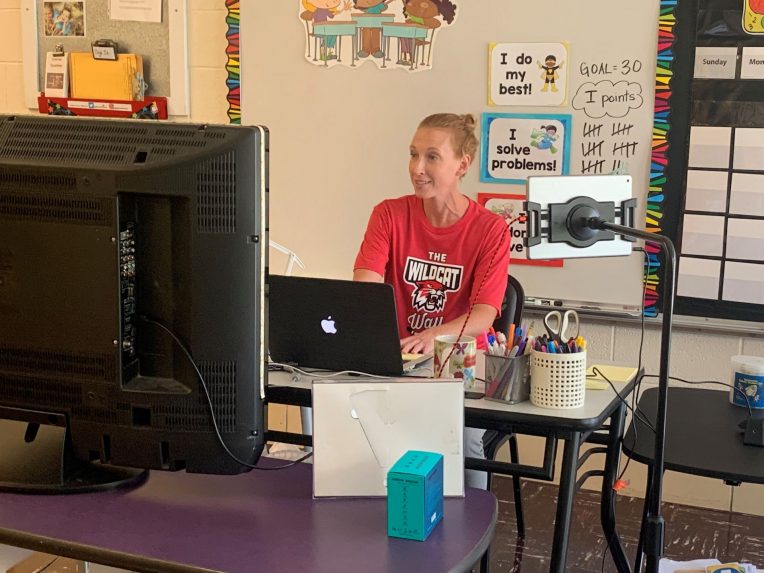We sat down with two faculty associates at Metcalf School who are no strangers to navigating the journey of educational technology and remote learning. Instructional facilitator Kristi Sutter and middle school science teacher Mike Jones ’95, M.S. ’18, have 50 years of teaching experience between them and have presented multiple times on numerous topics related to educational technology. Both are also non-tenure track faculty in the School of Teaching and Learning and offered their perspectives on important teaching takeaways from this experience.
- Building connections with all students
Focusing on the social emotional learning and mental health of the student over class content is hugely important. We definitely found that we need to follow the Maslow before Bloom concept of checking in with the students to make sure their basic needs are met first. - Taking risks and embracing failures
This is the time to try something new. We stress risk-taking to our students, and this was an opportunity for teachers to do the same thing. As a result, we have found new opportunities for students to learn. Lots of mistakes were made, but students and educators are better for it. - Student agency
Having a more flexible learning environment for students has enabled them to have more choice and voice in what and how they learn. This has served to better connect students to their own learning and has provided opportunities for differentiation. - Take time for yourself
Teachers and students are stressed. Lots of changes occurred at the same time, and the teaching day has been thrown all out of whack. It has really shined the light on how important it is for teachers to take time for self-care so they can reach their students. - Alternative ways to check for understanding
Teachers had a toolbox full of strategies to check for understanding during face-to-face teaching, and remote learning challenged teachers to explore digital tools for formative assessment (such as EdPuzzle, Nearpod, Flipgrid, and others) to inform instruction. When students participated in this digital reflection, we found an unexpected benefit; they took more ownership in their learning. - Making connections outside the classroom
In the pre-COVID world, having speakers come to the classroom could prove challenging. Now that people are more comfortable with the Zoom environment, it’s possible to bring in guest experts from around the country to share their expertise. - Power of instructional videos
Previously, teachers would lecture just once on a topic, and students may miss valuable content. Teachers have become more proficient in creating these valuable resources that students can access over and over again to make sure they understand. - Power of communication
The pandemic has forced teachers to communicate more regularly in a variety of ways, whether it’s clearly communicating learning expectations, answering questions, providing feedback, or keeping parents informed. - Re-evaluating our practices
This time has shined the light on how we are teaching, and we’ve learned that we can’t just translate what we did in-person to a virtual environment. We have been able to focus on mastery of the most important aspects and have changed how we use class time from providing subject content to more time spent applying that content. - Experience and comfort with technology
While none of us would claim to be experts, all teachers have gotten more comfortable with technology of all types. In fact, teachers need to be commended. In most schools, they had only a week to prepare for virtual learning. In true teacher form, they made it happen.



